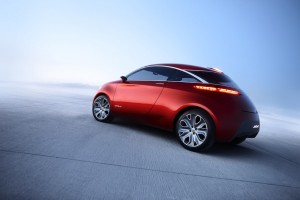Chinese car buyers will get their first good look at the new Ford Focus, this week, at the biennial Shanghai Motor Show. The compact model is a critical part of the maker’s global OneFord strategy – but could be even more crucial if Ford hopes to finally gain some traction in the world’s largest and fastest-growing automotive market.
The Detroit maker, which has been building momentum in the U.S., Europe and some of the other key emerging markets, continues to struggle in China, where its share lags not only market leaders like General Motors and Volkswagen, but even relative newcomers such as Hyundai.
But with a planned marketing blitz that includes the Focus and a wide range of additional products, Ford executives insist they can make up for lost time.
“Together with our partners, we are leveraging the strength of the One Ford plan and our global platforms to bring 15 new vehicles to China by 2015, reinforcing our commitment to offer a full portfolio of vehicles for our Chinese customers,” said Joe Hinrichs, president, Ford Asia Pacific and Africa.
Ford is still paying a stiff penalty for its reluctance to enter the Chinese market as early as GM, which launched production more than a decade ago – by which point Volkswagen was already well-entrenched. Ford initially saw better opportunities in Thailand, where it has a huge production base for exports to much of Asia.
Ford only made a serious commitment to China in 2003, a good half-decade behind the leaders.
The slow start made it difficult for Ford to find a good local partner, analysts stress. Chinese rules require foreign makers to partner with domestic brands. And in the peculiar way that has played out, both GM and VW have allied with one of the Chinese market giants, Shanghai Automotive Industry Consortium, or SAIC.
Ford has partnered with the smaller Chan’an Automobile Co. – but even that relationship has been complicated by the split between Ford and Japanese ally Mazda, which is now setting up its own production and distribution operations in China.
With China now the largest automotive market in the world – and some analysts expecting sales there could surge to more than 40 million a year – most makers are racing to tap into that growth. (Click Here for Mercedes’ plans to build its Chinese market.) Ford is no exception. Like arch-rival GM, it expects that demand outside North American could soon account for more than two-thirds of its overall sales. And it predicts 70% of its growth will came from the Asia-Pacific region.
But so far, it has garnered a meager 2% of the Chinese market. That compares with 11% for market leader VW, 7% for GM and 6% for Hyundai, which also made a late but aggressive start.
This time, the U.S. maker appears ready to commit the resources needed, however. Among other things, that means a new $490 million, state-of-the-art passenger-car assembly plant in Chongqing, which will have an initial capacity of 150,000 units when it goes into operation next year.
The maker also plans to double its dealer count from the 240 Ford retail outlets currently operating in China.
Ford officials insist that their product blitz will give them the needed momentum. But it’s not the first time they’ve made bold promises.
In 2007, at an earlier Shanghai Motor Show, former Ford China chief Phil Spender declared, “We’re well and truly making our own way,” only to see sales fall well short of expectations.
The reception given the new Ford Focus could serve as a sign as to whether the maker can finally position itself as more than an also-ran in the market that could determine the shape of the global auto industry in the years ahead.

